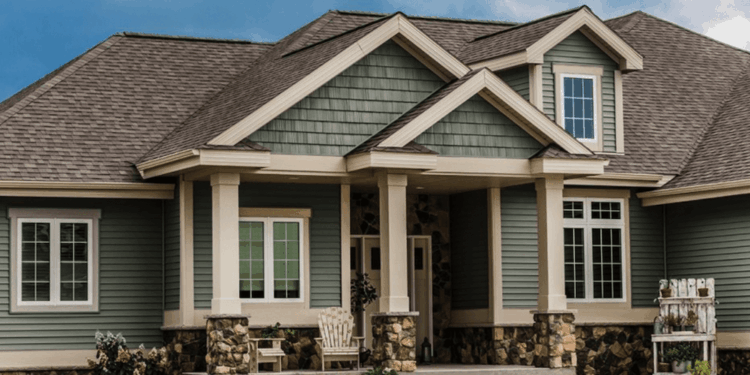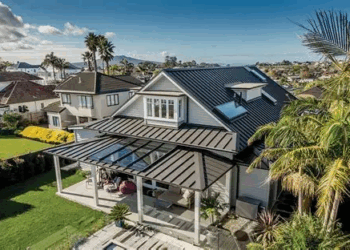
When it comes to home improvement projects, finding affordable siding options is crucial for both aesthetics and functionality. Exploring the world of siding materials reveals a plethora of choices, each with its unique benefits and considerations. From cost-effective solutions to DIY installations, this guide covers everything you need to know about affordable siding for your residential property.
Types of Affordable Siding Materials
When it comes to choosing siding materials for your home, affordability is often a key factor. Here are five different types of affordable siding materials available in the market, along with their durability, maintenance requirements, and aesthetic appeal.
Vinyl Siding
Vinyl siding is a popular choice for its affordability, low maintenance, and durability. It is available in a wide range of colors and styles, making it versatile for different architectural styles. While it may not have the same aesthetic appeal as other materials like wood or brick, vinyl siding is a cost-effective option for many homeowners.
Fiber Cement Siding
Fiber cement siding is another affordable option that offers durability and low maintenance. It is resistant to rot, insects, and harsh weather conditions, making it a long-lasting choice for your home. With a variety of textures and finishes available, fiber cement siding can mimic the look of wood or stucco, adding to its aesthetic appeal.
Engineered Wood Siding
Engineered wood siding is a budget-friendly alternative to traditional wood siding, offering similar aesthetics without the high cost and maintenance requirements. It is made from wood fibers and resin, providing durability and resistance to rot and pests. Engineered wood siding comes in a range of styles, including lap siding, shakes, and panels, making it suitable for various architectural designs.
Metal Siding
Metal siding, such as aluminum or steel, is a durable and low-maintenance option for homeowners on a budget. It is resistant to fire, rot, and pests, making it a practical choice for areas with extreme weather conditions. While metal siding may not appeal to everyone aesthetically, it can complement modern and industrial architectural styles with its sleek and minimalist appearance.
Stucco Siding
Stucco siding is a cost-effective option that provides excellent insulation and durability. It is made from a mixture of cement, sand, and water, creating a sturdy and weather-resistant exterior for your home. Stucco siding can be applied in various textures and colors, adding a unique and timeless look to different architectural styles.
Cost Factors to Consider
When considering affordable siding options for your residential property, there are several key cost factors to keep in mind. These factors can greatly impact the overall cost of installation and should be carefully considered before making a decision.
Size of the Property and Complexity of Design
The size of your property and the complexity of the design are significant factors that can influence the cost of siding installation. Larger properties will require more materials and labor, leading to higher overall costs. Similarly, properties with intricate designs or unique architectural features may require specialized siding materials or installation techniques, resulting in increased expenses.
- For smaller properties with simple designs, cost-effective siding options such as vinyl or fiber cement can offer good value for money.
- Properties with larger surface areas or complex designs may benefit from more durable and long-lasting materials like engineered wood or metal siding, despite a higher initial cost.
- Consider the long-term maintenance and durability of the siding materials to ensure you get the best value for your investment.
DIY vs. Professional Installation
When it comes to installing siding, homeowners often face the decision between tackling the project themselves or hiring professionals
DIY Siding Installation
DIY siding installation can be a cost-effective option for those who are handy and have some experience with home improvement projects. It allows homeowners to save money on labor costs and gives them the flexibility to work at their own pace.
- Pros:
- Cost-effective
- Flexibility in scheduling
- Sense of accomplishment
However, DIY siding installation requires certain skills and tools to ensure a successful outcome. Homeowners should have basic carpentry skills, knowledge of proper installation techniques, and access to the necessary tools such as a saw, hammer, level, and tape measure.
Improper installation can lead to costly repairs down the line and may affect the longevity of the siding. Common risks include water infiltration, poor insulation, and structural damage if not installed correctly.
Professional Siding Installation
Hiring professionals for siding installation can provide peace of mind knowing that the job will be done correctly. Professional installers have the expertise, experience, and tools to ensure a high-quality installation.
- Pros:
- Expertise and experience
- Time-saving
- Warranty on workmanship
While professional installation may come at a higher cost compared to DIY, it can save homeowners from potential headaches and costly repairs in the future. Professionals can also help with proper insulation and weatherproofing to enhance the durability of the siding.
Energy Efficiency and Insulation
Choosing the right siding material for your home can play a significant role in improving energy efficiency. The type of siding you choose can impact how well your home retains heat in the winter and stays cool in the summer.
Importance of Insulation
Insulation is crucial in reducing energy costs and maintaining indoor comfort. It helps regulate the temperature inside your home by preventing heat transfer through the walls. By investing in siding materials with good insulation properties, you can reduce the strain on your heating and cooling systems, leading to lower energy bills.
- Look for siding materials with high R-values, which indicate better insulation capabilities.
- Vinyl siding, for example, is known for its insulation properties and can help improve energy efficiency.
- Fiber cement siding is another affordable option that offers good insulation and durability.
Wrap-Up
In conclusion, affordable siding offers a perfect balance between cost-effectiveness and durability, making it a wise choice for homeowners looking to enhance their property. By understanding the various types of siding materials, cost factors to consider, and installation options, you can make an informed decision that suits your budget and style preferences.
Upgrade your home with affordable siding today and enjoy a beautiful exterior that stands the test of time.
Questions and Answers
What are the most common types of affordable siding materials?
Common types include vinyl, fiber cement, wood, metal, and engineered wood siding.
How does the size of the property affect the overall cost of siding installation?
Larger properties typically require more materials and labor, leading to higher installation costs.
Is DIY siding installation recommended for beginners?
While it can save money, DIY installation requires skills, tools, and may pose risks if done improperly.
How can energy efficiency be improved with the right siding material?
Choosing insulated siding materials can help regulate indoor temperatures and reduce energy costs.













